Cooking Utensils
This week, James Timmins shows us some more of his finds around the village:
It is perhaps unsurprising that many of my finds in the village are related to cooking and food through the ages. We still discard many food related items today and it is not uncommon to find drinks cans and foil cake wrappers buried as deep as medieval coins in the ground. Perhaps in two hundred years detectorists will proudly display them!
In Medieval times families cooked most things in a cauldron. This would have sat directly in the open fire and would be supported by three legs. Cauldrons were essential items and would be repaired when broken. Often the legs of a cauldron would break off over time and these interesting features turn up from time to time in our fields.
Below is a selection of late medieval cauldron legs, some still show signs of blackness from the fire.
There are similar examples still attached to cauldrons in Taunton Museum.

When cauldrons or clay pots were damaged, the ‘go to’ repair material in medieval times was lead. This could be melted and then fitted into the hole to form a bung. These lead repairs also pop up occasionally in my finds, and they are found across the country. They are known as ‘pot mends’ by detectorists (we are a creative bunch).
Here are a couple of ‘pot mends’, and you can clearly see how the pot would have been sandwiched between the lead.
Cutlery from people’s picnics through the ages also makes an appearance in our fields. The earliest spoons that I have found in the village date from the 17th century and have spindly handles but quite large but relatively shallow bowls.
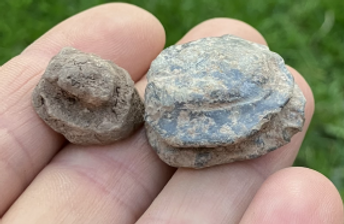
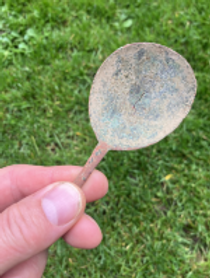
This silver spoon handle still has the makers mark on its back and the owners’ initials B.I.M on the front. I was able to confirm that it was made by Richard Ferris of Exeter in about 1785. This would probably have belonged to a wealthy Georgian in the past and today antique collectors still buy spoons made by Richard Ferris.
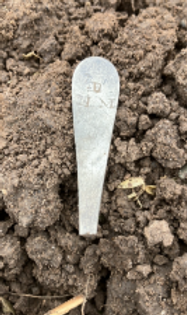
As well as spoons I occasionally find knives, usually small pocket knives lost by farm workers over the years. Sometimes though I find remains of much earlier knives like these Tudor knife part’s below. These strange small blobs of metal had me puzzled for several years, but, being a bit of a hoarder, I kept them in the hope of discovering what they were. I am pleased to say that I was able to positively identify them as end caps to Tudor knife handles and their funny shape is actually intended to look like a horse’s hoof with a horse shoe fitted. It seems strange but this was apparently a common design and there is an excellent example of a similar knife end cap in the Cotswolds Archaeology virtual museum https://cotswoldarchaeology.co.uk/museum/knife-handle-2/
You can just make out the horse shoe design below in these two end caps found in the village.
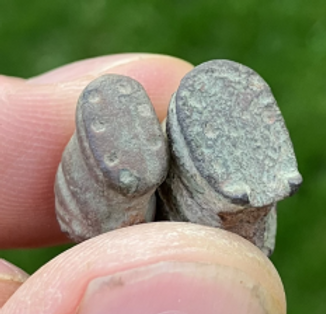

The final food and drink related item of interest is this Victorain soldiers water canteen plug. This dates from the Zulu war era and the canteen would have been made of wood. The metal plug has a small hole through it to drink from and there would have been a little wooden stopper that was attached by string to keep the water in. Who knows how it came to be in our local fields, perhaps a soldier on leave or maybe it was just used by a worker in the fields.
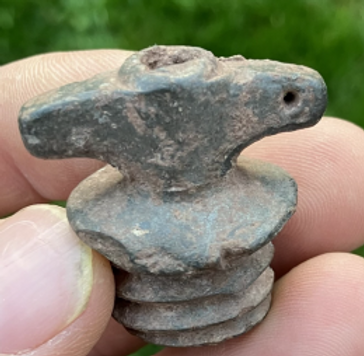
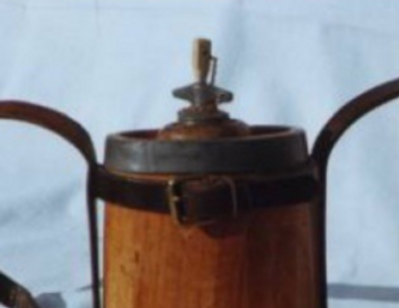
Above is an example from the internet of an original canteen with the top in it.





